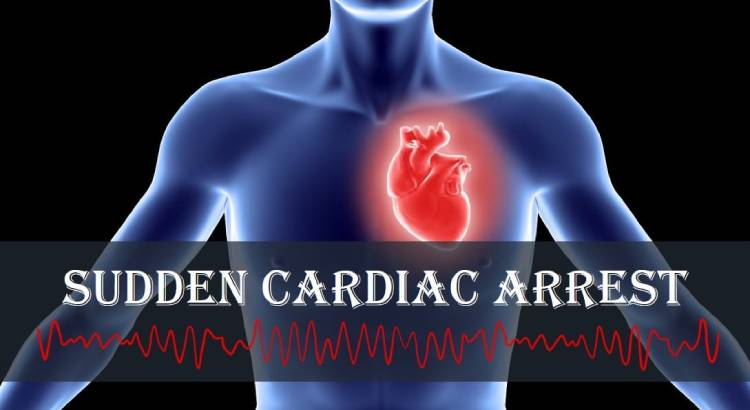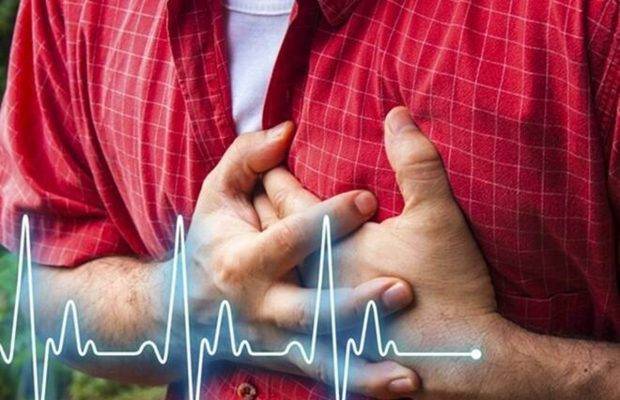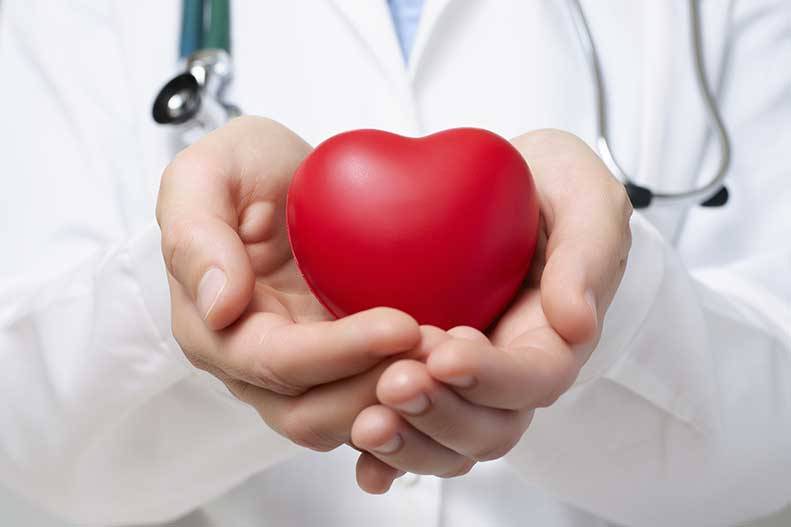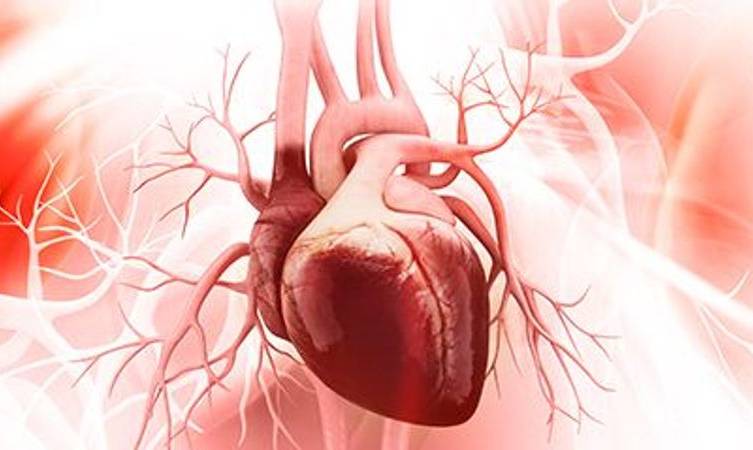Cardiac Arrest is when your heart stops working or pumping suddenly. The sudden cessation of heart function, respiration, and awareness is known as Sudden Cardiac Arrest. An issue with your heart’s electrical system causes the disorder, which affects your heart’s pumping action and stops blood flow to your body.

A heart attack, in which blood flow to a portion of the heart is interrupted, is not the same as sudden cardiac arrest. A heart attack, on the other hand, can sometimes cause an electrical disruption that results in rapid cardiac arrest.
Sudden cardiac arrest can be fatal if not addressed quickly. With prompt and appropriate medical attention, survival is possible. Cardiopulmonary resuscitation (CPR), the use of a defibrillator, or even simple chest compressions can increase the chances of survival until help arrives.
According to the Sudden Cardiac Arrest Association, a heart attack is caused by a malfunction in the heart’s circulation, or “plumbing.” When a coronary artery is suddenly blocked, the blood supply to the heart is substantially reduced or cut off, causing heart muscle damage.
A sudden cardiac arrest, on the other hand, is caused by an “electrical” issue in the heart. It occurs when the electrical signals that control the heart’s ability to pump short-circuit. The heart may suddenly beat too quickly, causing the ventricles — the heart’s primary pumping chambers — to tremble or flutter instead of pumping blood in a coordinated manner. Ventricular fibrillation is a rhythm issue that “occurs in reaction to an underlying heart ailment that may or may not has been discovered,”
Sudden Cardiac Arrest: What Is It?
You might think of a “heart attack” when you hear of a young person passing away. However, abrupt cardiac arrest (also known as sudden cardiac death) is a different story.
Ventricular fibrillation stops blood flow to the rest of the body by interrupting the heart’s pumping function. A person suffering from sudden cardiac arrest will lose consciousness and have no pulse or breathe.
The person normally dies within minutes without quick CPR or a shock from an automatic defibrillator, which is why it’s dubbed “sudden cardiac death.”
However, there is a link between a heart attack and sudden cardiac death. An electrical error caused by a heart attack might result in sudden cardiac arrest.
Sudden Cardiac Arrest Causes
You’re undoubtedly aware that heart disease can be caused by high blood pressure, high cholesterol, diabetes, and other issues in older individuals. However, you may be unaware of the rare heart conditions that can result in abrupt cardiac arrest in young individuals.
Lawless explains that “the underlying conditions in young people are considerably different from the underlying problems in someone who is 50 or 60 years old.” “We’re looking for genetic disorders of the myocardial [muscle tissue of the heart], the electrical system, and, of course, congenital [heart] diseases in younger people.”
Hypertrophic cardiomyopathy (HCM), a condition characterised by abnormal thickening of the heart muscle, is the leading cause. “They have a thick heart,” Lawless explains. “With exertion, the inner layers of the heart may not obtain enough blood supply.”
But keep in mind that HCM is a rare condition. Only 0.05 percent to 0.2 percent of the population is thought to be affected.
Another risk factor for sudden cardiac arrest is congenital anomalies of the coronary arteries. The arteries may be misaligned, or a person may be born with only one coronary artery instead of the typical two, as in the instance of basketball player Pete Maravich.
Other disorders that can cause abrupt cardiac arrest include long QT syndrome, an inherited electrical ailment of the heart; acute myocarditis, an inflammatory heart illness; and Marfan syndrome, which caused Flo Hyman’s cardiac arrest.
Marfan syndrome is a connective tissue genetic condition with potentially catastrophic cardiovascular consequences. Marfan syndrome patients “tend to be tall and lanky,” according to Lawless. They are susceptible to blood vessel tears (such as the aorta). Sudden spikes in blood pressure, such as those experienced during intense athletic exertion, enhance the risk.
Some athletes die when they are stuck in the chest, a condition is known as commotio cordis.
“When the heart is assaulted during the vulnerable part of the cardiac cycle, it goes into this awful rhythm called ventricular fibrillation,” Lawless explains. According to her, the chances of this happening are extremely remote because the vulnerable time window is so narrow. “Within forty-thousandths of a second, it has to happen.”

Risk Assessment for Sudden Cardiac Arrest
In rare circumstances, sudden cardiac arrest happens without warning.
A regular electrocardiogram (EKG) or echocardiogram are not included in the AHA guidelines (ultrasound evaluation of the heart). The use of these tests to evaluate athletes before they participate is contentious and expensive. Opponents contend that there isn’t enough data to back up their effectiveness in screening, that they aren’t cost-effective, and that they can lead to more unnecessary testing. They may also give false findings, excluding many athletes unnecessarily. “It’s a very genuine problem that they’ll be left out,” Lawless adds.
However, not everyone is waiting for the official approval of these tests. Johns Hopkins University in Maryland offers a screening programme for student-athletes aged 14 to 18. It includes an electrocardiogram to check the heart’s electrical rhythm and screen for long QT syndrome, as well as an echocardiogram to assess heart size and shape, pumping function, heart muscle thickness, and the condition of the heart valves, in addition to a medical questionnaire and physical exam.
Regardless of the disagreement over screening methods, catching issues early is critical since therapy can minimise the chance of sudden cardiac arrest. Young people who are at risk, for example, may need to avoid competitive sports, take beta-blocker medicines to keep their hearts from racing or undergo surgery to install a defibrillator to shock their hearts back into a normal electrical rhythm.
Any symptoms should be taken seriously.
Chest discomfort and blackouts (particularly when exerted), fainting, palpitations or fluttering of the heart, getting easily fatigued, weakness, dizziness, and shortness of breath are all symptoms of heart issues that lead to cardiac arrest.
Sports increase the load on a weak heart, therefore these symptoms usually appear during or shortly after activity.
Symptoms should never be overlooked. Lawless recalls a high school athlete who complained of chest problems 16 times to the school nurse, but no one listened to him. “During athletics, he died of hypertrophic cardiomyopathy,” she recalls.
Remember that when young athletes are sick, they don’t usually offer information. “They’re savages. They want to stay in the game and demonstrate that they are fully healthy and capable “He’s doing his job,” Lawless says.
Parents, on the other hand, must inquire. “Be kind with them,” Lawless advises, “and if something doesn’t seem right to you — if they become winded easily or clutch their chest — make sure you talk to them.”
Some athletes refuse to stop playing even after receiving a diagnosis. After blacking out a couple of times on the floor, Lawless came across a high school basketball player who was diagnosed with hypertrophic cardiomyopathy. Despite this, he aspired to play in college. “It takes a lot to persuade individuals that they can’t play these high-intensity activities when they have these illnesses,” Lawless adds.
Adults are in the same boat. Any indicators of cardiac issues should not be overlooked.
Symptoms
The following are immediate and severe signs of sudden cardiac arrest:
Sudden demise
There is no pulse.
There is no way to breathe.
Consciousness loss
Other indications and symptoms may appear prior to sudden cardiac arrest. These could include the following:
Uncomfortable chest
Weakness Shortness of breath
Palpitations (fast-beating, fluttering, or pounding heart) are common symptoms of abrupt cardiac arrest.

When should you see a doctor?
If you notice any of the following signs or symptoms, call 102 or seek emergency medical help:
Pain or discomfort in the chest
Palpitations in the heart
Heartbeats that are fast or irregular
Wheezing that isn’t related to anything
Breathing problems
Fainting or being on the verge of fainting
Dizziness or lightheadedness
The shortage of oxygen-rich blood when the heart stops can result in death or irreversible brain damage within minutes. When you’re assisting an unconscious person who isn’t breathing, time is of the essence.
Check the person’s heart rhythm with the defibrillator. The defibrillator will deliver another shock if necessary. Continue this pattern until the subject regains consciousness or emergency personnel arrive.
Sudden cardiac arrest can be caused by a variety of heart problems.
People with no known heart problems might experience sudden cardiac arrest. A life-threatening arrhythmia, on the other hand, frequently occurs in those who have a pre-existing, possibly undiscovered heart ailment. The following are some of the conditions:
Coronary artery disease is a condition that affects the arteries of the heart. People with coronary artery disease, in which the arteries become clogged with cholesterol and other deposits, decreasing blood flow to the heart, are more likely to experience sudden cardiac arrest.
A heart attack has occurred. It is which is most commonly caused by severe coronary artery disease, can cause ventricular fibrillation and abrupt cardiac arrest. A heart attack can also cause scar tissue to form in your heart. Electrical short circuits in the scar tissue can cause heart rhythm irregularities.
Heart enlargement (cardiomyopathy). This happens when the muscle walls of your heart expand and enlarge or thicken. The muscle of your heart then becomes aberrant, resulting in arrhythmias.
Valvular heart disease is a condition that affects the heart valves. Leaking or narrowing of your heart valves might cause your heart muscle to stretch or thicken. Arrhythmia is more likely to develop when the chambers become enlarged or weaker as a result of stress-induced by a tight or leaking valve.
Congenital heart disease may be the cause of sudden cardiac arrest in children or adolescents. Adults who have had surgery to address a congenital heart abnormality are nonetheless at risk of abrupt cardiac arrest.
In the heart, there are electrical issues. In other patients, the issue is with the electrical circuitry of the heart rather than the heart muscle or valves. Conditions like Brugada syndrome and long QT syndrome are examples of primary cardiac rhythm abnormalities.
Factors that are at risk
Because a sudden cardiac arrest is frequently linked to coronary artery disease, the same factors that put you at risk for coronary artery disease might put you at risk for sudden cardiac arrest. These are some of them:
A history of coronary artery disease in the family
Smoking
Blood pressure that is too high
High cholesterol levels in the blood
Obesity\sDiabetes
A sedentary lifestyle
Other variables that could put you at risk for sudden cardiac arrest are:
A previous cardiac arrest or a family history of cardiac arrest are also risk factors.
Heart attack in the past
Other types of heart illness, such as cardiac rhythm problems, congenital heart defects, heart failure, and cardiomyopathy, have a personal or familial history.
As you get older, your chance of sudden cardiac arrest rises.
Using illegal substances like cocaine or amphetamines
Low potassium or magnesium levels, for example, might cause nutritional imbalances.
Obstructive sleep apnea (OSA) is a type of sleep apnea that
Chronic kidney disease is a condition that affects the kidneys

Complications
Reduced blood supply to the brain produces unconsciousness when abrupt cardiac arrest occurs. If your heart rhythm does not return to normal quickly, brain injury and death will occur. Those who have survived a cardiac arrest may show evidence of brain injury.
Being healthy on the outside is no guarantee against heart disease. Those who look to be in good health and follow a strict diet and exercise regimen appear to be succumbing as well. Heart attacks are hitting at a younger age these days, with people in their 30s and 40s becoming the new high-risk groups, potentially as a result of high-pressure lifestyles.
“A person who appears healthy may have had blockages in his or her artery for a long time, which can lead to abrupt cardiac arrest,” says Rishi Gupta, clinical services director at the Asian Institute of Medical Sciences in Faridabad, near Delhi. According to Abc.net.au, cardiac arrest occurs when your heart’s rhythm is disrupted, causing it to stop pumping blood around your body. When an artery leading to the heart becomes blocked, a heart attack ensues. Blood flow (and thus oxygen) to the heart muscle is reduced as a result. Unless your heart attack results in cardiac arrest, the heart normally does not stop beating during a heart attack.
Routine Checkup Is Necessery
“Eight out of ten times, a blockage in the heart is the cause of a cardiac arrest,” says Ashok Seth, chief of cardiology at Fortis Escorts Hospitals in New Delhi. There could be a different rationale for 20% of the cases.” A clot in the lungs that cuts off the oxygen supply to the heart, sudden bleeding in the brain that shuts down all body mechanisms, including the heart, massive ingestion of toxic drugs that can shut down the heart’s function abruptly, a viral infection that causes cardiomyopathy (irregular signal generated by an undetected weak heart muscle), or congenital heart defecation are among them, according to him.
Indian Heart Association Says
According to the Indian Heart Association, half of all heart attacks in Indian males occur before they reach the age of 50, and a quarter of all heart attacks occur before they reach the age of 40. Women’s numbers were not immediately available.
According to Dr Seth, “the problem of non-detection of heart-related diseases is a very important one.” Even when they have 70 percent or more blockages, one out of every four people reports no symptoms or merely vague ones like weariness. “Three unsuspecting patients in their 30s were diagnosed with significant arterial blockages of more than 70% at our hospital last week in a single day,” he says. One was there for a normal check, while the other two were being tested in preparation for another procedure. They all exercised regularly, and none of them had ever suffered heart-related symptoms such as weariness or shortness of breath.
The importance of prevention cannot be overstated.
Low awareness of risk factors and inadequate testing procedures, particularly among the youth, are the leading causes of rising numbers and decreasing age in heart-related illnesses. Shortness of breath, extensive fatigue for no apparent reason (in fact, a person’s ability to exercise may also deteriorate), build-up of fluid in the body somewhere, persistent cough or wheezing, lack of appetite, nausea, confusion, impaired thinking, and increased heart rate are among the symptoms to watch for, according to Dr. Gupta.
According to him, everyone over the age of 35 should have a cardiac check-up every year because Indians are genetically inclined to develop coronary artery disease early in life. “Your treating doctor may be able to offer certain extra tests that can detect any blockage at an early stage, perhaps saving your life from cardiac arrest,” he says.
Treadmill Test
Routine exercise tests, such as the TMT (treadmill test), only detect arterial blockages that are more than 75% blocked, according to Dr Seth. To detect these early, persons over 40 should undergo advanced cardiac testing such as calcium scoring by CT scan—this is especially critical for those with a family history, those who travel frequently, those who are overweight, diabetic, heavy smokers, and exercisers. “If calcium is seen in a CT scan of the heart arteries, early blockages, even 10-15% blockages, can be diagnosed and certain medications, such as aspirin and cholesterol-lowering drugs, can be provided so that the damage does not proceed and a heart attack can be avoided,” he explains.
Stress is a contributing element.
Stress is frequently a contributing element. “While rapid, acute stress does not trigger heart attacks, it can lead to stress cardiomyopathy” (or broken heart syndrome). According to Nilesh Gautam, senior interventional cardiologist and head of the department of preventive cardiology and rehabilitation at the Asian Heart Institute in Mumbai, “keeping our stress levels in check is as crucial as keeping our triglyceride and cholesterol ratios in balance.” Those who absorb stress are at a higher risk.
Excessive unaccustomed activity, according to Dr. Seth, can be harmful. Young people are sometimes inspired to participate in body-building activities such as weightlifting. Too much activity in a short period of time can cause issues. Before beginning any high-intensity exercise, a comprehensive medical examination is required, as this may cause the plaque to rupture, resulting in a heart attack.
Dr. Seth advises that smokers who exercise frequently are at an increased risk of heart attacks, even if their arteries are blocked by 40-50 percent. In fact, he claims that heart attacks have been observed in young, habitual smokers with blockages as small as 10%. This is because both excessive smoking and strenuous exercise can induce blood clots. As a result, a lower percentage of blockage can rupture unexpectedly, causing a severe clot to grow on top, completely obstructing the artery and causing a heart attack. He continues, “It’s just like something gets stuck in a narrower water pipe and suddenly stops water flow.” He adds, “Plus, women are more asymptomatic than men, so they need to be much more cautious.”
Educate Masses
“It’s critical to educate people that no one is completely safe from cardiac arrest,” says Dr. Gupta. “It’s also critical to keep risk factors (diabetes, obesity, high blood pressure, etc.) to a minimum, and, most importantly, to catch blockages as soon as possible so that the appropriate preventive treatments can begin.”

Sudden Cardiac Arrest in Children and Adolescents
After practice, an 8-year-old boy playing peewee football for the first time collapses into cardiac arrest. Just as she takes her long-awaited turn down a water park slide, a 10-year-old girl’s heart stops pumping. In arithmetic class, a 14-year-old pupil collapses on the floor, unresponsive. After making the game-winning shot, a 16-year-old high school basketball player collapses on the court.
Sudden cardiac arrest in young persons is uncommon, but it does happen. Each year, nearly 2,000 young, seemingly healthy people under the age of 25 in the United States die of sudden cardiac arrest, according to the Centers for Disease Control and Prevention (CDC). Families and communities are left with a large and catastrophic impact as a result of these fatalities. However, there are methods for identifying risk variables that can aid in the prevention of such disasters. Continue reading.
How Does Sudden Cardiac Arrest Happen?
Sudden Cardiac Arrest (SCA) is a life-threatening emergency caused by “an abrupt and unexpected cessation of cardiac function, followed by loss of consciousness and collapse.” If not treated quickly, SCA can be lethal. Outside of a hospital, survival is contingent on local residents dialling 911 and responding quickly to bystander emergencies.
Are there any early warning signals of abrupt cardiac arrest?
When SCA strikes young people who appear to be in good health, there is frequently no evident damage or medical reason that the patient or family is aware of. Some young people with SCA may have had heart-related symptoms in the past, such as shortness of breath, chest discomfort, or fainting, but were not considered life-threatening. Others had no signs of heart abnormalities prior to the SCA.
When might young individuals die of sudden cardiac death?
Sudden cardiac arrest is a primary cause of death among young athletes, but it also affects young people who do not participate in organised sports. It can happen when exercising, relaxing, or even sleeping. Young people can die from sudden cardiac arrest days or weeks later as a result of brain damage caused by the SCA.
What causes a young person’s rapid cardiac arrest?
There aren’t many recognised causes of abrupt cardiac arrest in children and young adults, although they could include:
Cardiomyopathy with hypertrophy. This is the most prevalent cardiovascular cause of SCA in young people, and it is usually hereditary and often untreated. Muscle cells thicken in the heart’s lower chambers, known as ventricles. This can result in an irregular cardiac rhythm, particularly when exercising. Other forms of juvenile cardiomyopathy could potentially be involved.
Anomalies of the coronary arteries. Defects in the way the coronary arteries link to the heart can induce cardiac arrest by reducing blood supply to the heart muscle during activity. Young persons with coronary artery anomalies are frequently born with them, but symptoms may not appear until later in life.
Primary arrhythmias are a type of arrhythmia that occurs in the heart. Undiagnosed genetic disorders that disrupt the heart’s electrical impulses can sometimes cause sudden cardiac arrest in patients with structurally normal hearts. These include, for example:
Long QT syndrome is a condition characterised by a prolonged period of time A heart rhythm disorder that causes a fast and erratic heartbeat.
The Wolff-Parkinson-White syndrome is a kind of Parkinson’s disease. A diversion in the heart’s electrical route can cause it to pump abnormally quickly.
Right ventricular dysplasia causes arrhythmia (ARVD). Scar tissue replaces a portion of the heart’s muscular tissue in this hereditary disorder.
Myocarditis.
Myocarditis is a condition in which the heart’s walls become inflamed, which is usually caused by an infection. Most occurrences of myocarditis in children occur when a virus, such as an enterovirus, enters the heart. Bacterial, fungal, or parasitic diseases, as well as adverse reactions to some drugs, can cause it.
Marfan syndrome is a condition that affects people of all ages This connective tissue disorder can cause tears in the aortic blood vessel of the heart. People born with the syndrome, who are often tall and have long arms, may be unaware of their condition.
Cordis Commotio Commotio cordis is more common in sports using projective items, such as ice hockey, lacrosse, and baseball and is caused by a blow to the chest right over the heart at certain periods in the heartbeat cycle.
Is there anything that can be done to help prevent sudden cardiac death?
There are efforts that families and communities may do to reduce their child’s risk of sudden cardiac death:
Well-child visits and sports physicals should be scheduled on a regular basis. Regular wellness visits with their doctor are required for all youngsters. These appointments provide an opportunity to receive a thorough physical examination and a thorough health history in order to identify risk factors that may contribute to SCA. Even if a child is not active in organised sports, pre-participation tests are vital because gym class and recreational activities can and should include plenty of activity! A screening form that patients and parents can fill out with their doctor at any time to assist determine whether a specialist visit is necessary.
Learn about your ancestors. Share the cardiac health histories of blood relatives with your paediatrician (children, siblings, parents, aunts and uncles, nieces and nephews, grandparents, and cousins). This might be useful for guiding inquiries at well-child visits and sports physicals.
Risk factors for sudden cardiac death that should be investigated further include:
An otherwise healthy family member under the age of 50 has died unexpectedly or unexplainedly.
A hereditary heart muscle or electrical issue in a family member
Exercise-induced chest discomfort
Unknown cause of an irregular heart rate or rhythm
Without warning, fainting, passing out or having a seizure during exercise
A congenital heart defect is a heart defect that is present at birth (including those surgically repaired)

Should all young people be tested for the risk of sudden cardiac arrest?
It is not currently suggested to do mass screening procedures such as an electrocardiogram (EKG) and echocardiogram (ultrasound of the heart) on all young individuals or athletes to detect risk factors for sudden death. The fear is that a significant number of false-positive test results may induce undue anxiety and testing. Furthermore, these tests do not detect all events.
Recognizing warning signals and risk factors, as well as proper history-taking and cardiology and genetic screening for patients at higher risk due to family members with cardiac problems or an SCA, can all assist to lower the chance of sudden death.
Disclaimer: The author’s views are his or her own. The facts and opinions in the article have been taken from various articles and political commentaries available in the online media and Eastside Writers does do not take any responsibility or obligation for them.
Note: Contact our Writers at www.eastsidewriters.com for writing Blogs/Articles on any niche. We have experts in various domains from Technology to Finance and from Spirituality to Lifestyle and Entertainment.
Originally posted 2021-09-18 03:29:38.







Pingback: A Complete Guide to Detox and Rejuvenate Your Body - Eastside Writers
Pingback: 12 foods to be avoided for young and glowing skin - Eastside Writers
Pingback: Is pain in the left arm an indication of a heart attack - Eastside Writers
Pingback: Is it good to go nude and sleep without your clothes on? - Eastside Writers
Pingback: Boost Your Blood Circulations To Counter Health Issues - Eastside Writers
Pingback: The Wholesome Multiple Benefits Of Kutik Can Make You Live A Longer Healthy Life - Eastside Writers
Pingback: The Wholesome Multiple Benefits Of Kutki Can Make You Live A Longer Healthy Life - Eastside Writers
Pingback: Why CoQ10 Is The Drug Of Choice For Many To Health Management